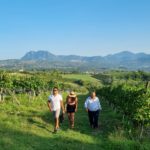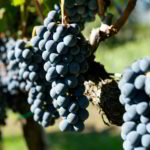An interview with Teresa Bruno, director of Consorzio Tutela Vini d’Irpinia

Irpinia is gaining an increasingly high reputation for its fine, ageworthy white wines, while Taurasi is still a long way from enjoying the recognition it deserves. What do you think could be necessary to improve the popularity of this intense red?
This is part of a global trend in the wine world – red wines in general are losing market shares in many places with consumers nowadays tending to prefer lighter reds, with more finesse and more delicate flavours. Those characteristics are completely the opposite of our local wines, especially Aglianico which is tart and tannic in youth and needs time to mellow. Moreover, it’s a wine that needs lengthy ageing, which requires investments on the part of producers. These various factors have concurred in the mispositioning of Taurasi. Its value, not only economic, is still far from being fully recognized. The role of the Consortium – and also my own personal approach – is to open our minds to new ways of production and new styles, without forgoing our history and heritage. Zoning is important, but so is making lighter, more approachable wines, which can benefit growers and enhance the quality of old vineyards.
If there is a future for red wines, we are ready for it!
What initiatives are currently in place to promote the wines of Irpinia within Italy and abroad? Where are your main markets?
The Consorzio is, as ever, committed to safeguarding, promoting, monitoring and bringing value to Irpinia’s appellations. Promotional events, although crucial, are not a core element of our activities. Having said that, the recent twinning with Chablis is a way to promote two small areas that are both focused on high-quality white wines. With our participation at Wine Paris we were able to strengthen this twinning initiative with Chablis and we are planning to hold some masterclasses on the wines of Irpinia and Chablis together. In addition, we are working with Stevie Kim of the Vinitaly International Academy to organise a masterclass to present our wines and appellations to buyers and VIA students. More events at Vinitaly are on the agenda too. As for markets, as well as the United States there are some new markets that are growing, such as Scandinavia, where interest in wine is increasing. We are ready to invest in new markets too.

Campania is one of the top destinations of southern Italy, thanks to Pompeii, the Amalfi Coast and other popular places. Does inland wine tourism enjoy this flow of visitors?
Campania is a region where wine tourism is still lacking regulations and laws. That is why the Consorzio is actively working with the Campania region’s official department for tourism, in order to create a list of rules and regulations that can help facilitate and support the development of wine tourism inland. Part of the role of the consortium is in fact to interact with regional authorities in order to pave the way for tourists and support the wine tourism initiatives offered by our wineries. Hopefully, such region-wide investments will be a stimulus for those not yet ready to provide hospitality.
What type of co-operation is the Consortium planning in order to increase wine tourism?
The Consorzio is currently concentrating on exploiting and developing its historical headquarters, organising walk-around tastings. In the short term, we will also develop co-operations with the Cirò and Melissa wine consortium in Calabria and the Abruzzo regional wine consortium in order to create and grow a unique path for the promotion of wine tourism.
Which other wine territories do you find inspirational?
Barolo shows a lot of similarities with Irpinia, so rather than Tuscany, I see that wine area as inspirational.

What’s your opinion about Campania stories?
I can only speak positively about Campania Stories – it’s an important event that shows and tells people from all over the world about Campania’s wines including, of course, the wines of Irpinia. After years of being based in other parts of the region, the 2023 edition was hosted in Irpinia, exposing our land to the attention of a great many wine writers and journalists from all over the world. They were able to admire the pristine nature and the pure, unspoilt character of this hilly region and after that they acted as our ambassadors around the world.
Lastly, which is your favourite Irpinia wine and food pairing?
My favourite pairing is a local speciality green soup, made with wild greens and herbs from our hills here in Irpinia, flavoured with pork ribs and paired with Greco di Tufo. This soup tastes of the minerals, ash and marl found in our soil and the same flavours characterise Greco di Tufo, along with a great acidity, minerality and a warm taste. It’s an incredible pairing, perfect in every way.
